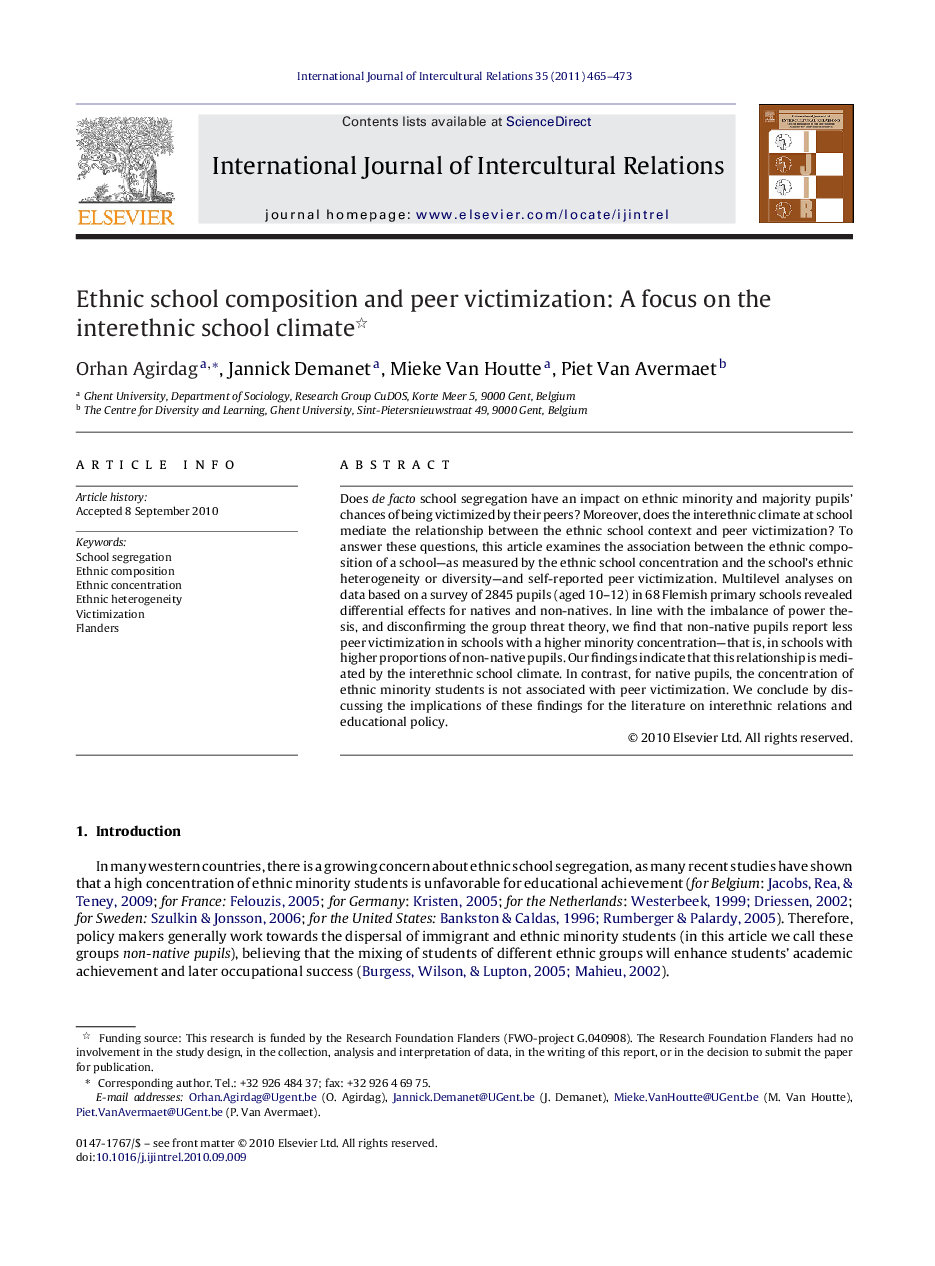| Article ID | Journal | Published Year | Pages | File Type |
|---|---|---|---|---|
| 947305 | International Journal of Intercultural Relations | 2011 | 9 Pages |
Does de facto school segregation have an impact on ethnic minority and majority pupils’ chances of being victimized by their peers? Moreover, does the interethnic climate at school mediate the relationship between the ethnic school context and peer victimization? To answer these questions, this article examines the association between the ethnic composition of a school—as measured by the ethnic school concentration and the school's ethnic heterogeneity or diversity—and self-reported peer victimization. Multilevel analyses on data based on a survey of 2845 pupils (aged 10–12) in 68 Flemish primary schools revealed differential effects for natives and non-natives. In line with the imbalance of power thesis, and disconfirming the group threat theory, we find that non-native pupils report less peer victimization in schools with a higher minority concentration—that is, in schools with higher proportions of non-native pupils. Our findings indicate that this relationship is mediated by the interethnic school climate. In contrast, for native pupils, the concentration of ethnic minority students is not associated with peer victimization. We conclude by discussing the implications of these findings for the literature on interethnic relations and educational policy.
